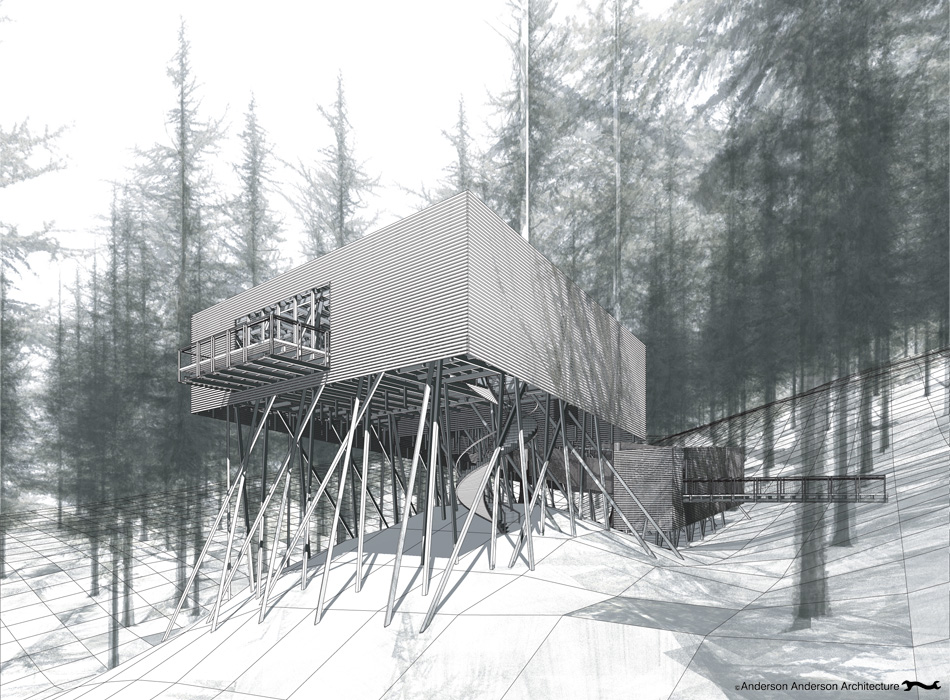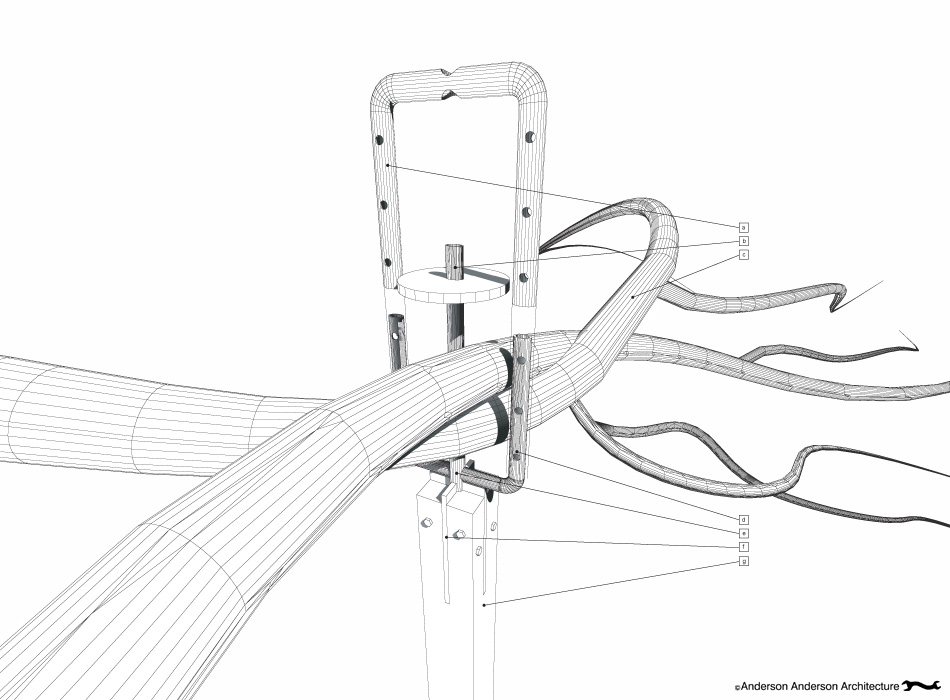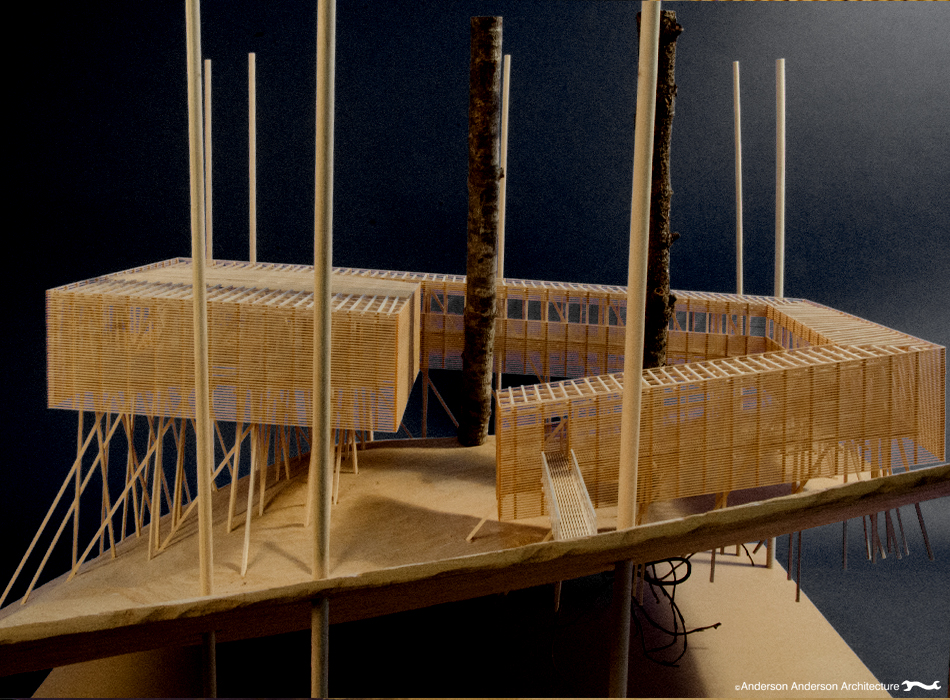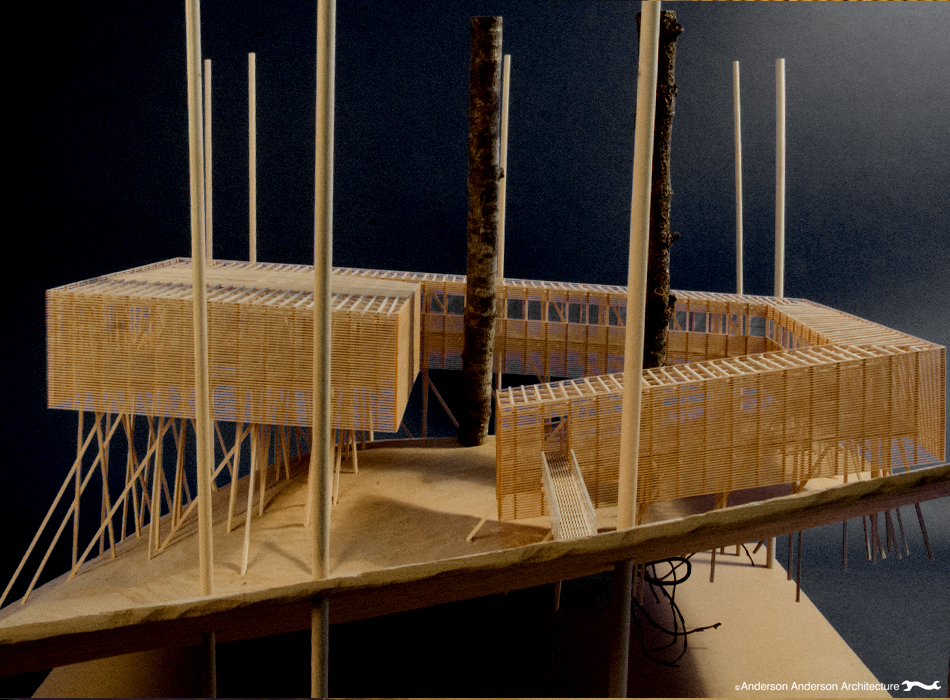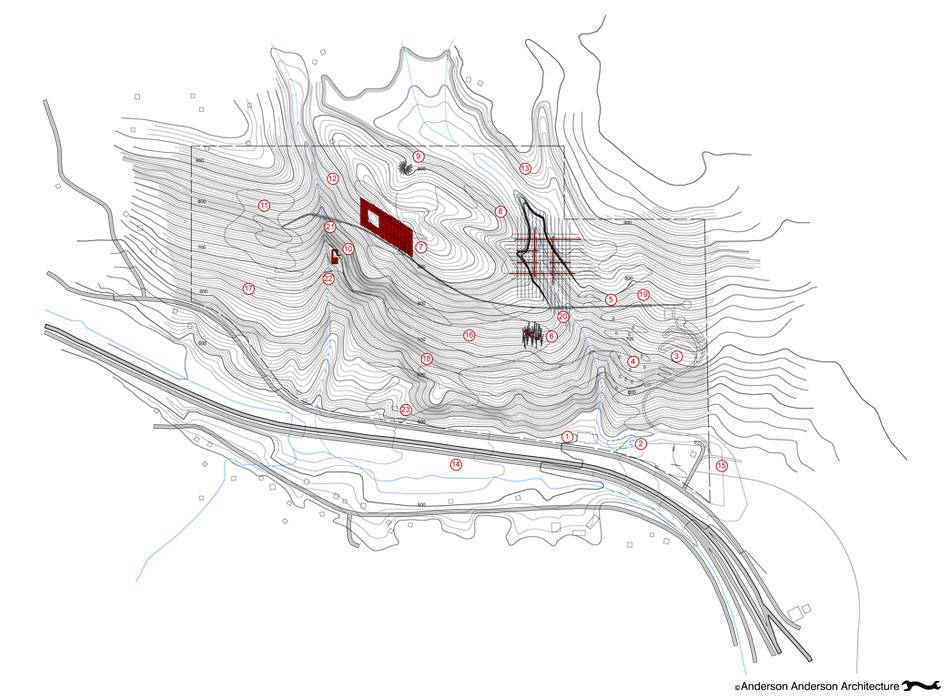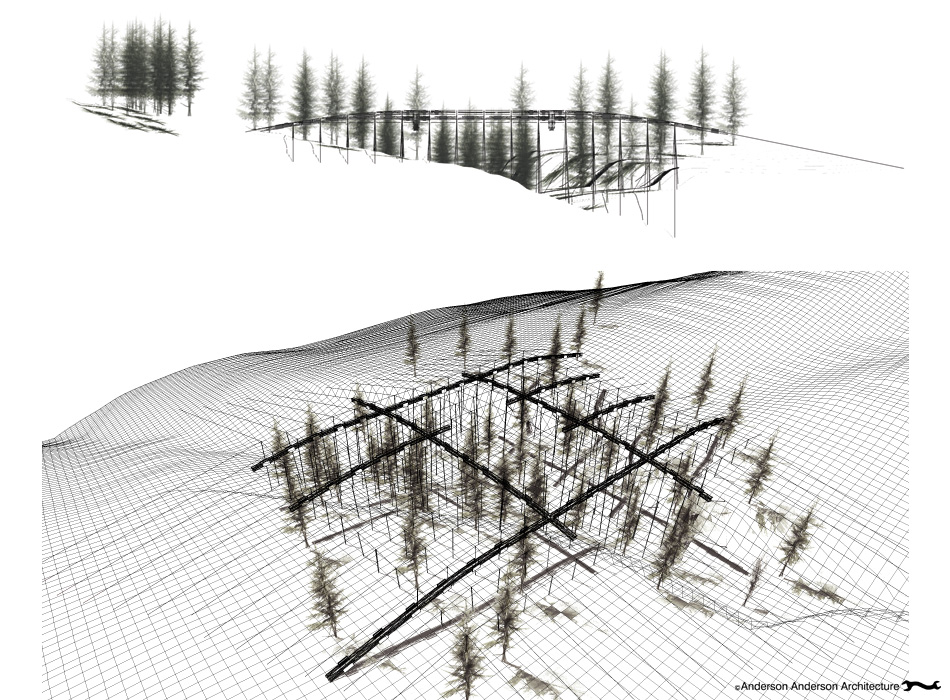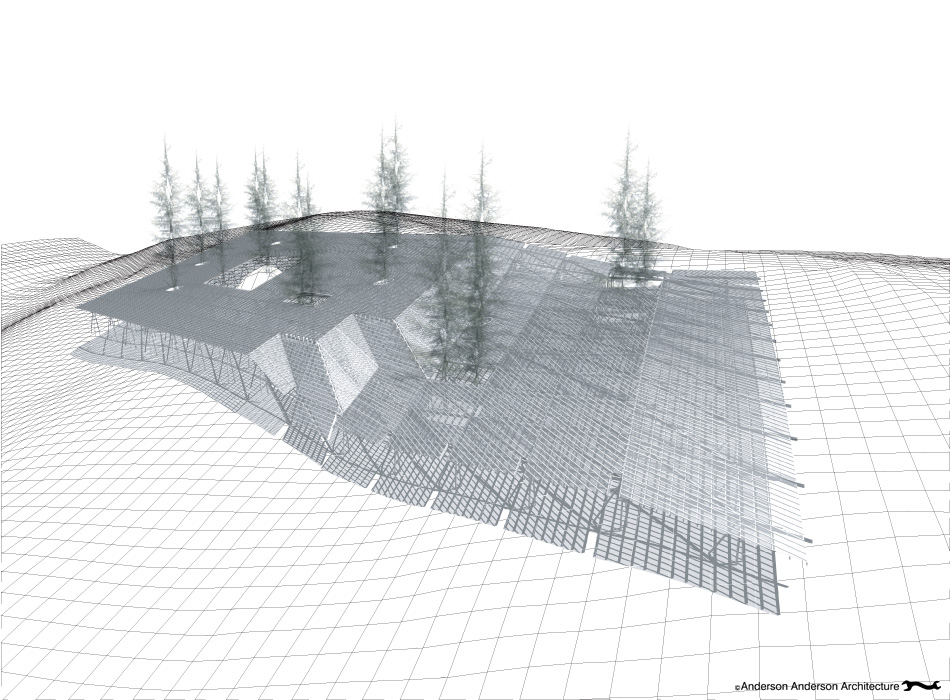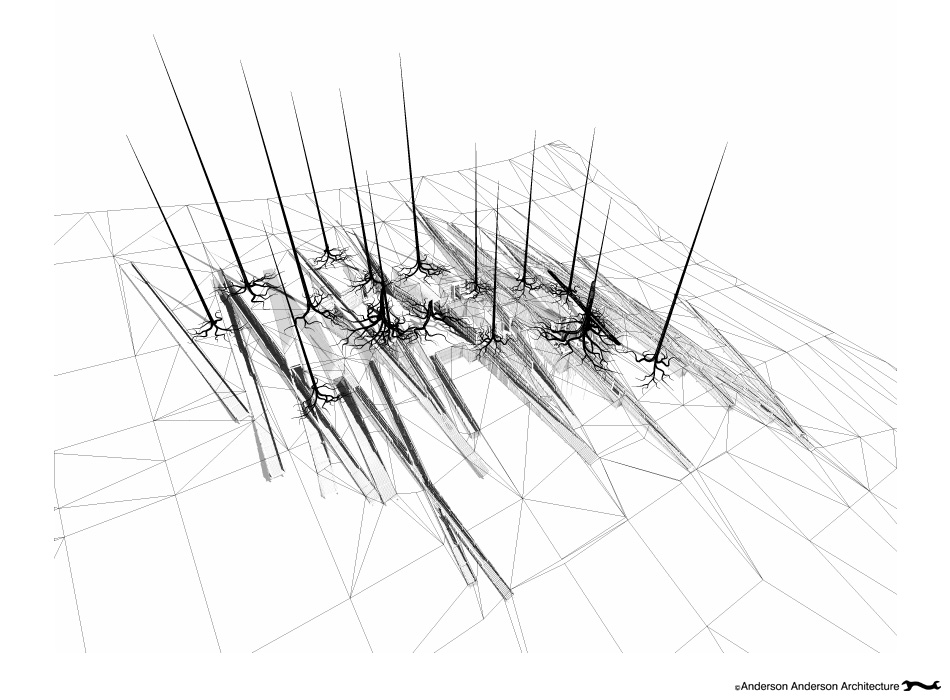ARBORETUM OF THE CASCADES
Preston, Washington
Working with Charles Anderson Landscape Architecture in Seattle, we designed four primary structures as interpretive centers and visitor facilities at various strategic points within the master plan for a new arboretum of native Northwest forestland. The nearby presence of a major highway, factory, and warehouse buildings caused us to suggest a revised theme to the arboretum’s educational mission and development plans. Although initially asked to create a space as natural and removed from human intervention as possible, we proposed to instead focus our design concept on the relationship between the built and natural environments, taking advantage of the positive aspect of the site’s easy access and visibility from the most highly traveled highway leading in and out of Seattle from the east. Rather than routing the arboretum entrance away from existing development and further encroaching on the forest, we repurposed the parking and other infrastructure of a defunct adjoining factory as a launching point at the edge of the forest from which to enter into an exploration of more appropriate examples of the interface between buildings and the natural environment. Wishing to demonstrate multiple strategies for buildings to relate sensitively to their sites, we designed all of the new structures, to be introduced into the forest itself, around a CNC-milled timber-frame system but deployed it in a different way for each interpretive center to create varying experiences: being underground with the roots of the trees, on the forest floor to focus on this habitat, and raised high on stilts up into the forest canopy itself. Instead of having a sharp contrast between the building and the surrounding landscape, the design concept is to provide a stepped progression of experience that is also a model and metaphor for the relationship between human intervention and the natural landscape.
The building is a completely foreign object within the natural landscape, but it is rendered in forms or materials taken from that landscape, successfully blending into a harmonious whole. This is juxtaposed with secondary “built” objects—trees planted in unnatural, buildinglike formations, showing human intervention in nature from another perspective.
AWARDS:
2006 AIA San Francisco Merit Award – Arboretum of the Cascades, Washington
2006 Progressive Architecture (P/A) Award – Arboretum of the Cascades, Washington


